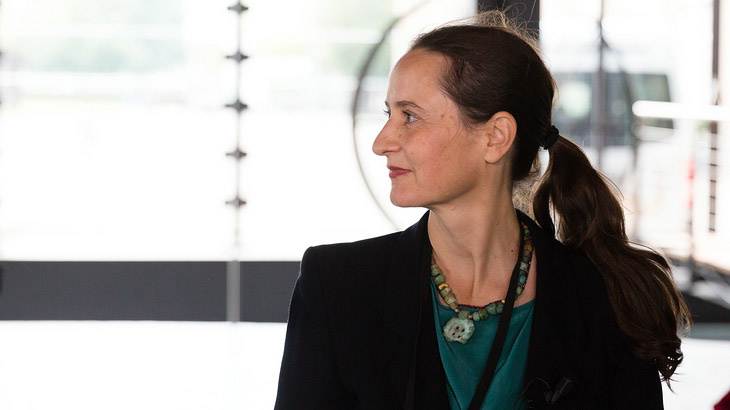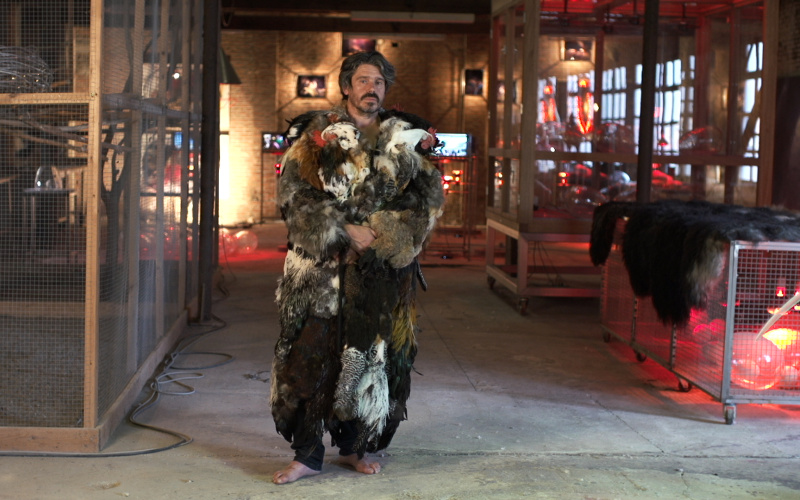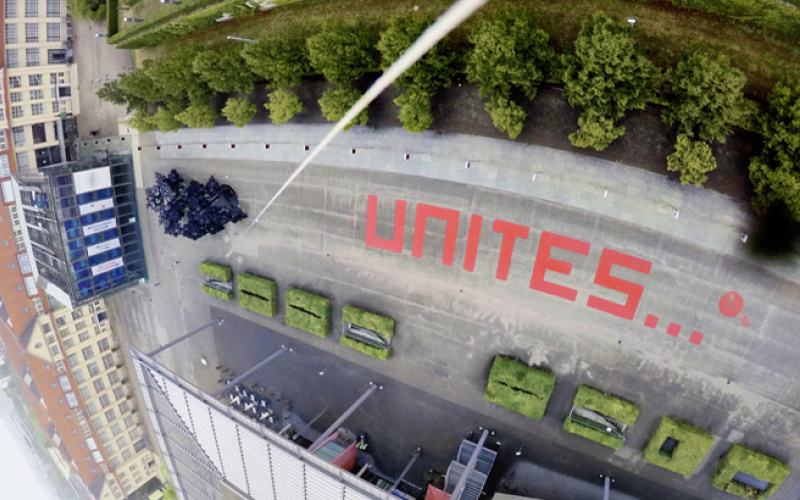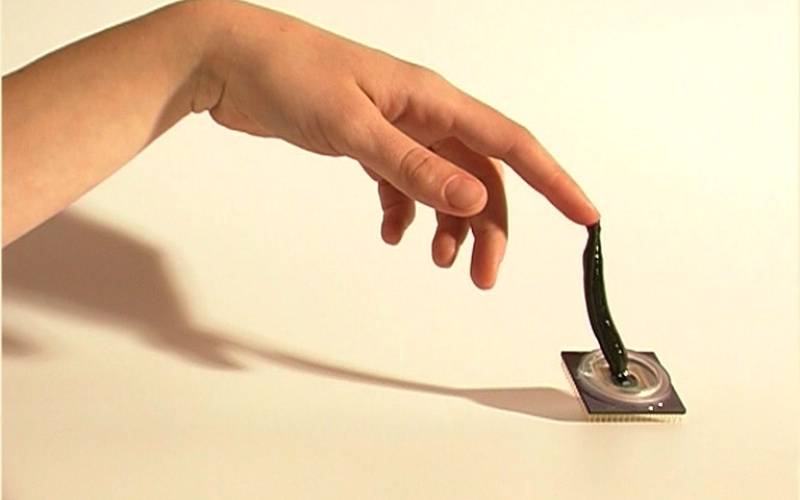Sasha Waltz in Interview with the BNN – Badische Neueste Nachrichten
On the Opening of the Exhibition »Sasha Waltz. Installationen Objekte Performances« ZKM | Karlsruhe, September 2013 Michael Hübl (BNN) interviewed the choreographer from Karlsruhe.
AN INTERVIEW WITH SASHA WALTZ BY MICHAEL HÜBL
Waltraud Kornhas was a former student of the free dancer Mary Wigman. Does this make itself noticeable in her dance classes?
Waltz: As a child, I was about ten years-old, I had already noticed that there was something special about this but, naturally, precisely what it was I was unable to say. Her classes certainly contained a whole range of elements drawn from classical ballet, but she placed particular emphasis on free improvisation especially in the warming up phase. Something new opened up here, since it was not strict ballet – there was never a sense of drilling – but rather of freely unfolding. But this was more than a dance class. Mrs. Kornhas had many belly dancers from the twenties, but also innovations; I noticed she had the first books on Pina Bausch. Paintings by her husband Werner Kornhas hung on the walls – it was a very inspiring atmosphere. I would frequently visit her later whenever I was in Karlsruhe; I spoke to her a lot and kept her informed about what was happening in my life, since she kept an interest in events until old age. She was an incredibly open woman, quite an extraordinary personality.
Would you say that your form of dance is the continuation of the “New German Dance”, as you encountered it in Waltraud Kornhas?
Waltz: Modern, or expressionist dance as developed by Mary Wigman, Gret Palucca or Rudolf von Laban, played a decisive role in my development. But the American post-modern has been no less important to me, in other words, everything after Cunnigham. Here, everything is broken open once again and a great deal of work is done with fine artists. There was a huge scene in New York, and I was very fascinated in this. At the age of sixteen I took part in a workshop held by an English dancer in Freiburg who drew on this history. This was where everything was decided – when it first became clear to me that I want to study dance. Before this event, dance had been less important. It was fun, and I enjoyed it, but it then became much more, involving consciousness and techniques of perception. It was at this point that I decided to pursue dance, to follow this line. When I later began producing my own pieces, I noticed that I had a more narrative approach, and that this involves a different form of expression as it was the case in postmodern forms with their strict abstraction: A peculiar mix that, one might also think, involved the dance theater of Pina Bausch. But, in fact, my path led via American postmodernity and back again. In other words, there are two strands.
In your work, the proximity to fine art plays a major role.
Waltz: This is true. I began working with fine arts very early on, and no less with musicians. The collective approach goes to the heart of my work. Theater is, indeed, also a collective work. I have cultivated close relations with very different musicians, from electronic music, but also from the free jazz scene through to contemporary composers with roots in classical music. As a third element, I should also mention the great operas, whether Baroque or the Romantic period. I also find these challenging; they present me with the question as to how I should treat other languages, what forms do I find? Questioning the manner in which I treat works and how I introduce my own means was a challenge each time. One can also see this in the work itself: there are periods and different approaches. As far as the fine arts are concerned, I participated as a choreographer in the stage set and in the design of the space from the outset. I have always worked with artists by engaging into dialog with them, since I am not a technician or architect, but always start out with a vision of the space. I think of the whole along very installative lines, something which also makes working at the ZKM so fascinating.
What precisely do you mean by that?
Waltz: Because the spaces for the stage are conceived very much along installative lines, they also function in the context of an exhibition. In other words, they are never solely conceived as a facade. I am someone who attaches particular importance to the materiality of the object. I do not want fakes, illusion. Therefore, the door is not painted but used; it is worked on. This is very important. This means that your works here at the ZKM also function without dance? Waltz: Many function without dance, though extracting dance entirely cannot really be done. What functions on stage with dancers is now transferred to objects or in videos. But there will also be dance performances. Only, here at the ZKM there will not be a separate choreography, as was the case for the Neue Museum in Berlin, or the MAXXI in Rome.
What are your perspectives, your next goals?
Waltz: For a long time I have carried this exhibition at the ZKM around with me. It is the result of reflections which have preoccupied me over many years. It has always been one of my aims to create objects which take the body as their point of departure. But I have repeatedly put this aside whenever the next stage production was on the agenda. This is why I am very glad about Peter Weibel having encouraged me to start something, which also requires this unique space – in other words, that I can once again think my themes through another medium. Something completely new will then evolve from this.



